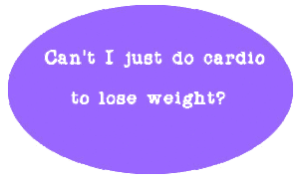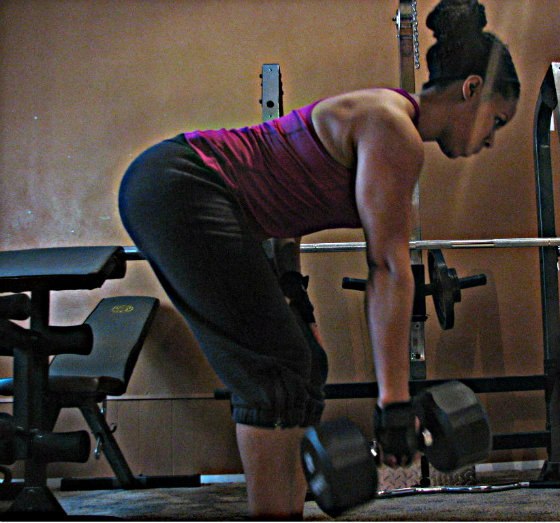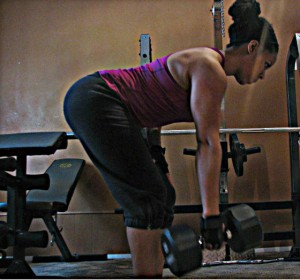
by Trish Adams | Jan 24, 2014 | Motivation
By now, you’ve gone through the process of setting goals, evaluating whether each is realistic, then splitting them up into doable chunks and are ready to focus on making it happen. Here are some things to consider over the coming months on doing just that.
 Accountability
Accountability
If you struggle with executing the plan you set forth, consider getting an accountability partner. An accountability partner is someone that you trust to hold you to the standards that you set for yourself. Having someone who cares about your success and will tell you when you are not staying the course, may help you to stay on track with your goals.
One goal at a time
If you have numerous goals for 2014, consider limiting how many you tackle at the same time. For example, if an overall goal is to improve your health by exercising more and eating better, consider improving one meal like breakfast consistently for a few weeks before moving on to lunch or dinner. By tackling just one task at a time,you will be able to focus all your energy and efforts in one area. Eventually that task becomes a habit requiring less effort. While it may seem like building habits one at a time will take forever to get you to your goal, statistics show that your success rate skyrockets when working on one new habit at a time. So, don’t rush it.
Focus on the little things
While your outcome goal is important, focus your daily efforts on the behaviors you outlined to reach your goal. Take a heads-down, foot-in-front-of-the-other approach, checking in every so often to make sure you are progressing toward your goal. Stay focused on the steps not the outcome.
Tackling limiting factors
A limiting factor is anything that is going to get in the way of your progress. Identify any limiting factors you may have and come up with a plan how to overcome them. If you know checking your weight frequently will have an impact on how you feel and sticking with your plan, put that scale away. If you are looking to improve nutrition, but travel for work, a limiting factor might be access to nutritious meals. Perhaps scouting out restaurants in advance or staying at hotels which provide a kitchenette might be one way to remove this limiting factor.
 1-2-3 Go!
1-2-3 Go!
This one goes without saying, but I’ll say it anyway. In order to reach your goals, you have to get started on them! Many times we’ll put off starting something until a particular event or even just the start of the week. One that I hear often is joining a gym after losing a certain amount of weight first. Say what? Don’t get me wrong, I understand how intimidating the gym environment can be. However, this is about you and no one else. Don’t put off the start date…start now!!
Stay encouraged
Over the year you may find that your progress has stalled. This doesn’t mean your plan is not working, but may simply mean you need an adjustment. Don’t panic. Don’t freak out. Evaluate what you’ve been doing and see what may need tweaking. Resist the urge to change too much at once as you won’t know what may get you progressing again. If needed, ask someone who may have an expertise in the area you’re trying to accomplish.
Along the way you will make mistakes and that’s fine. With each bump in the road you gain a little more experience. Pace yourself and keep moving forward. We’re rooting for you!
photo credit stockimages, stuart miles,

by Trish Adams | Jan 13, 2014 | Motivation
Hopefully your journey is off to an amazing start and you’ve laid out your goals for the next 90 days to a year, and have broken them down into smaller goals that you have a high level of confidence you can achieve. If perchance you haven’t laid out your goals, fear not, it’s never too late to get started. If you have started, well it never hurts to have a recap.
“Setting goals is the first step in turning the invisible into the visible.” -Tony Robbins
In our best year yet post we laid out a game plan for goal setting, separating goals into outcome goals, which are broader and not always under our direct control, and behavioral goals, which are under our direct control and will be the steps you take to achieve your outcome goal. Identifying behavioral goals simply requires a little Q&A session with yourself where you identify the tasks required to obtain a result. By the end of this exercise, you should walk away with the steps needed to achieve your outcome goal.
Once you have both your outcome goals and behavioral goals defined, examine them a bit closer. How specific are they? Can you answer what, where, when and why for the goal? Saying that you will exercise 3 times a week is somewhat specific, but can you be even more specific? For example, specify the days of the week and time that you’ll exercise. Maybe even the type and length of the exercise, so you know when you hit the mark. The more specific you can be with your goals the more clarity, direction and focus you will have. Having goals which are vague leaves room for misinterpretation and difficulty measuring success.
 Next up, make sure that your goals are measurable. This one should be pretty obvious why it’s important. After all, if your goals aren’t measurable, how will you know how you’re progressing? Being able to measure progress will also help you determine if any tweaking or adjustments are needed.
Next up, make sure that your goals are measurable. This one should be pretty obvious why it’s important. After all, if your goals aren’t measurable, how will you know how you’re progressing? Being able to measure progress will also help you determine if any tweaking or adjustments are needed.
Consider whether the goals you have set forth are realistic. That is, are they achievable. Many times we set goals based on a best-case scenario where all things go according to plan. We don’t account for the many unexpected events that occur in our lives. Furthermore, if you’re proposing activity that is new to you, make sure you factor in time for you to get acclimated, pace yourself.
Setting a timeline helps keep you on track and ensures the behaviors you set forth are appropriate for the goal. Losing 5% body fat whenever would require a drastically different set of steps than if you were to set a timeline of 3 months. Goals that are left open-ended tend to get put off until it is convenient. Having a deadline will help keep you motivated and on track. See why it’s important? Good.

Lastly, be sure to write your goals down and refer to them often, even daily. This will help you stay focused, committed and will serve as a reminder of what you want to achieve.
While the outcome goal is important, focus your daily efforts on your behavior goals. These are the steps that will achieve your outcome goals. Stay consistent with these steps and you will be on your way to success!
If you haven’t already, join our protein challenge and check in with us on Facebook, Twitter, and Instagram!
by Trish Adams | Jan 1, 2014 | Cardio
There are two times during the year when you are guaranteed to hear people pondering resistance training vs cardio for weight loss – post-holiday indulgence and pre-tank top season. Throughout most of the year, the benefits of resistance training over cardio exercise for long term weight management goes without saying. However, once panic sets in, we begin to throw all reason out the window in search of a quick fix.
 We’ve all been there at one time or another. Although a cardio-based fitness regimen no longer enters my realm of thinking, when I have an event coming up or feel the need to drop a few inches, I will consider cranking up the cardio…briefly, then I roll my eyes at myself and start to take account of my behavior over the past few days, weeks or months.
We’ve all been there at one time or another. Although a cardio-based fitness regimen no longer enters my realm of thinking, when I have an event coming up or feel the need to drop a few inches, I will consider cranking up the cardio…briefly, then I roll my eyes at myself and start to take account of my behavior over the past few days, weeks or months.
How has my diet been? Have I been slacking on my protein? How is my whole vs processed food balance? Doing any extra indulging lately? Next, I evaluate my sleep – have I been getting enough quality sleep? I also consider whether I have been stressed more than usual.
Really, this list can go on, but usually, I can quickly identify the culprit for why my clothes may be fitting a bit more snug and it never has to do with the fact that I need more cardio in my life. Until my diet, sleep and stress levels, among other things, are in check, modifying my fitness routine won’t address the root cause, but only mask it.
Many believe that increasing the amount of cardio exercise they do, achieving a higher calorie burn during their workout, will lead to quicker weight loss. When done excessively, however, this weight loss is usually not ideal and can come from a combination of fat as well as muscle. Losing muscle, especially as you get older, has many repercussions, and for weight loss in particular, is very deceptive. If your muscle mass decreases, regardless of the reason, expect your metabolism rate to do so as well!
So, for fat loss, shift your focus from the calories you burn during your session and more toward the calories burned throughout the day.

photo credit: MilitaryHealth via flickr cc
There is no problem with cardio exercise in and of itself, in fact there are many health benefits of cardio training. However, if your goal is fat loss you would be better served to include resistance training in your program. For a quick rundown on some of the benefits of resistance training, check out my post on heavy weight lifting. But, in short, for weight management and fat loss, building lean mass raises your resting metabolism rate. A higher RMR means more calories burned, primarily from fat, without adding ANY activity.
If getting sweaty and breathless is your thing, however, consider including 1-3 metabolic resistance workouts in your program. Not only will you break a sweat, you’re sure to be left gasping for air. More importantly, your body will continue to burn fat for up to 72 hours post workout.
Something else to keep in mind is that cardio training alone won’t alter the shape of your body. For example, if you are pear shaped, doing cardio will only make you a smaller pear, where as resistance training can alter your shape, by building up your upper body to balance out your lower body. In short, resistance training adds curves and the infamous “toned” look most people are looking for.
In the end, the long term weight management benefits of cardio can’t hold a candle to resistance training. When your goal is permanent weight or fat loss, look to your diet first as well as sleep and stress management, which can lead to better hormone balance and, ultimately, the perfect set up for fat loss. For training, prioritize building lean mass through resistance training to kick up your metabolism, then decide if you want to add in a bit of cardio for fun or a little extra fat burn.
There is nothing wrong with doing cardio if you enjoy it, however, if you are considering a cardio-only fitness routine with the goal of long term weight loss and/or a toned physique, after logging hour after hour of cardio you may be left wondering where you went wrong.

by Trish Adams | Dec 26, 2013 | Motivation
 The new year is fast approaching and, as tradition has it, you may be contemplating making a few New Year’s Resolutions. January 1st often comes with high hopes of starting anew, but may also be mixed with some anxiety, especially if you haven’t had much success with resolutions in the past. For many of us, we make resolutions, year after year, which more often than not, fade into wish lists. We start off with the best of intentions, but at some point things go off course and we never quite recover. This year, rather than making a lofty list of goals, why not try a different approach. One that splits your resolutions into mini goals that you feel highly confident that you can achieve.
The new year is fast approaching and, as tradition has it, you may be contemplating making a few New Year’s Resolutions. January 1st often comes with high hopes of starting anew, but may also be mixed with some anxiety, especially if you haven’t had much success with resolutions in the past. For many of us, we make resolutions, year after year, which more often than not, fade into wish lists. We start off with the best of intentions, but at some point things go off course and we never quite recover. This year, rather than making a lofty list of goals, why not try a different approach. One that splits your resolutions into mini goals that you feel highly confident that you can achieve.
Identifying goals, changes…whatever you call them
When it comes to your list of goals, separate them into two categories: outcome-based vs behavioral-based goals. With outcome goals you don’t have direct control over the outcome. Losing 10 pounds of fat in 10 weeks is an example of an outcome goal. An example of a behavioral goal, of which you do have direct control, is including protein at each meal. Behavioral goals should be constructed in such a way as to move you closer to your outcome goal. Both outcome and behavioral goals should be practical, specific and measurable. So saying that you want to ‘get healthy’ in the new year won’t quite cut it.
 Framing your goals
Framing your goals
State your goals in a positive manner rather than a negative one. Instead of listing all the things you’re going to give up (i.e. stop eating processed food), list the things you will gain/do MORE of (i.e. eating more whole foods, fiber, protein, etc.). Believe it or not, re-framing your goals in the positive can help to remove mental blocks and get you closer to your goal. After all, no one wants to be restricted from doing something.
Get emotional
Now that you have your list of goals, look deeper into the reasons why you want to achieve them. What is really driving you to make this change? Maybe you want to set a better example for your kids or something similar. Whatever your reasons are, identify them then write them down. Willpower is an exhaustible resource and having that emotional tie in to your goal will help pull you through the tough times. Referring to this list regularly will also help reinforce your commitment.
Get ‘er done
Be practical with what you can commit to. If you don’t currently exercise, consider if it is realistic to set a goal of exercising 6 days a week right out the gate. Break bigger goals down, so that if you were asked, ‘On a scale of 1 to 10, how confident are you that you can make this change?’ , your response is a 9 or 10. If your response is a 5 or 6, break that goal down further until you can respond with a strong 9 or 10. Don’t set yourself up for failure even before you begin. Start with 1-2 goals that you feel strongly that you can achieve. After successfully maintaining this activity for 2-4 weeks move on to the next one….and the next, and so on.
 Going off track
Going off track
I can’t stress this enough. Whether it’s missing a scheduled workout or over indulging at a dinner out with friends, let it go. Life is unpredictable. Things happen. Don’t sweat it. Progress is not about perfection. You will still progress toward your goal without adhering to some rigid plan. Just get back on track and ditch the guilt.
Last, but most important
There’s one other area that can seriously derail your resolution efforts and that is your mind. However, you define yourself is who you will ultimately be. If you define yourself as an athlete, you will believe that you are an athlete. Likewise, if you define yourself as a failure, you will believe that you are a failure. Just believing that you are capable immediately raises the glass ceiling that many of us set for ourselves. Practice positive self talk and self love regularly.
There it is. It won’t always be smooth sailing, but tip the board as much as possible in your favor from the beginning and you will be off to great start.
Image courtesy of: FreeDigitalPhotos.net

by Trish Adams | Dec 12, 2013 | Building Muscle

Nowadays, you can’t read about fitness without finding recommendations for women to lift weights…heavy weights. Statements like this might leave you scratching your head trying to determine just what qualifies as heavy lifting.
Shortly after Kiki and I met, I asked her how it was that she could eat so much more than me, yet be so much smaller than me. I have a good six inches on her and God knows how many pounds. Her response was simply that she lifted heavy weights. Well, it goes without saying that I immediately responded that I lifted heavy, too, and shared my stats. Kiki’s reply was simply a blank stare emoticon, which I imagined IRL her face looked more like Arnold from Different Strokes saying, ‘What you talking about Willis?’.
Like many women, I didn’t fully grasp the concept of lifting heavy. Sure, I trained with dumbbells and a barbell, but what constituted heavy weights? Was there some magic number I needed to aim for? Would I be considered a heavy lifter once able to squat or deadlift my body weight? Turns out that these were simply benchmarks or goals to strive for. The amount of weight that is heavy for you is relative and will, and should, change over time.
Resistance training is usually done with one or two goals in mind – increasing muscle size and/or strength. There are obviously other reasons, but suffice it to say that most folks fall into these categories. Muscle fibers grow in size and strength in response to training. To achieve this growth, you must train with enough resistance. But, how much is enough?

For your chosen rep range, typically 1-5 for strength gains and 6-10 for size, you’ll want to select a weight that allows you to complete the exercise with good form and full ROM (range of motion). The weight selection should be such that you are able to complete the set, but not be able to perform more than 1-2 additional reps.
Sounds simple enough, right? Not so fast. Our bodies are wonderfully adaptive organisms, so what was once ‘heavy’ may not be heavy for long. In order to continue generating physiological changes, you will want to increase the resistance. So, once you’re banging out 3 or more reps above your target, while maintaining proper form, take that as a sign to increase the load.
BENEFITS
The benefits of heavy lifting are many. I’ve highlighted a few below.
- Fat loss – Adding muscle, metabolically active tissue, to your body will increase your resting metabolism rate. That means, even when you’re sitting or sleeping, you’ll burn additional cals. For each pound of muscle added, you’ll burn up to an additional 50 cals each day. That may not sound like much, however, add 5-10 pounds of muscle over time and you’re looking at up to a few hundred cals burned a day without adding any extra activity!
- Attitude boost – Lifting something that you once thought was impossible, can bevery liberating and empowering. It will have you saying “Bring it!” to whatever challenge comes your way.
- Bone density – As we age we lose bone mass. Performing heavy weight bearing exercises helps to prevent bone loss and conditions like osteoporosis. Starting a heavy lifting program before bone loss sets in around age 40, gives you a leg up.
- Injury prevention – Stronger muscles and tendons promote protection and stability in the joints, which can help you avoid injury not only when exercising, but during every day activities as well.
- Strength – You’ll get stronger, plain and simple. Every day things like carrying the kids, hoisting groceries or, say, moving the couch, will become a breeze.
- Lean curves – Think rounded shoulders instead of slouchy, sloping ones. A firm and lifted derriere instead of a droopy one. Cardio nor barbie weights will get you that!
I hope this clears up heavy lifting a bit more for you. If not, drop us a comment – we love questions! And if you’re new to heavy lifting and need a workout program, check out our Beginner Strength Training Manual.
Plugin by Social Author Bio










 The new year is fast approaching and, as tradition has it, you may be contemplating making a few New Year’s Resolutions. January 1st often comes with high hopes of starting anew, but may also be mixed with some anxiety, especially if you haven’t had much success with resolutions in the past. For many of us, we make resolutions, year after year, which more often than not, fade into wish lists. We start off with the best of intentions, but at some point things go off course and we never quite recover. This year, rather than making a lofty list of goals, why not try a different approach. One that splits your resolutions into mini goals that you feel highly confident that you can achieve.
The new year is fast approaching and, as tradition has it, you may be contemplating making a few New Year’s Resolutions. January 1st often comes with high hopes of starting anew, but may also be mixed with some anxiety, especially if you haven’t had much success with resolutions in the past. For many of us, we make resolutions, year after year, which more often than not, fade into wish lists. We start off with the best of intentions, but at some point things go off course and we never quite recover. This year, rather than making a lofty list of goals, why not try a different approach. One that splits your resolutions into mini goals that you feel highly confident that you can achieve. Framing your goals
Framing your goals



Recent Comments